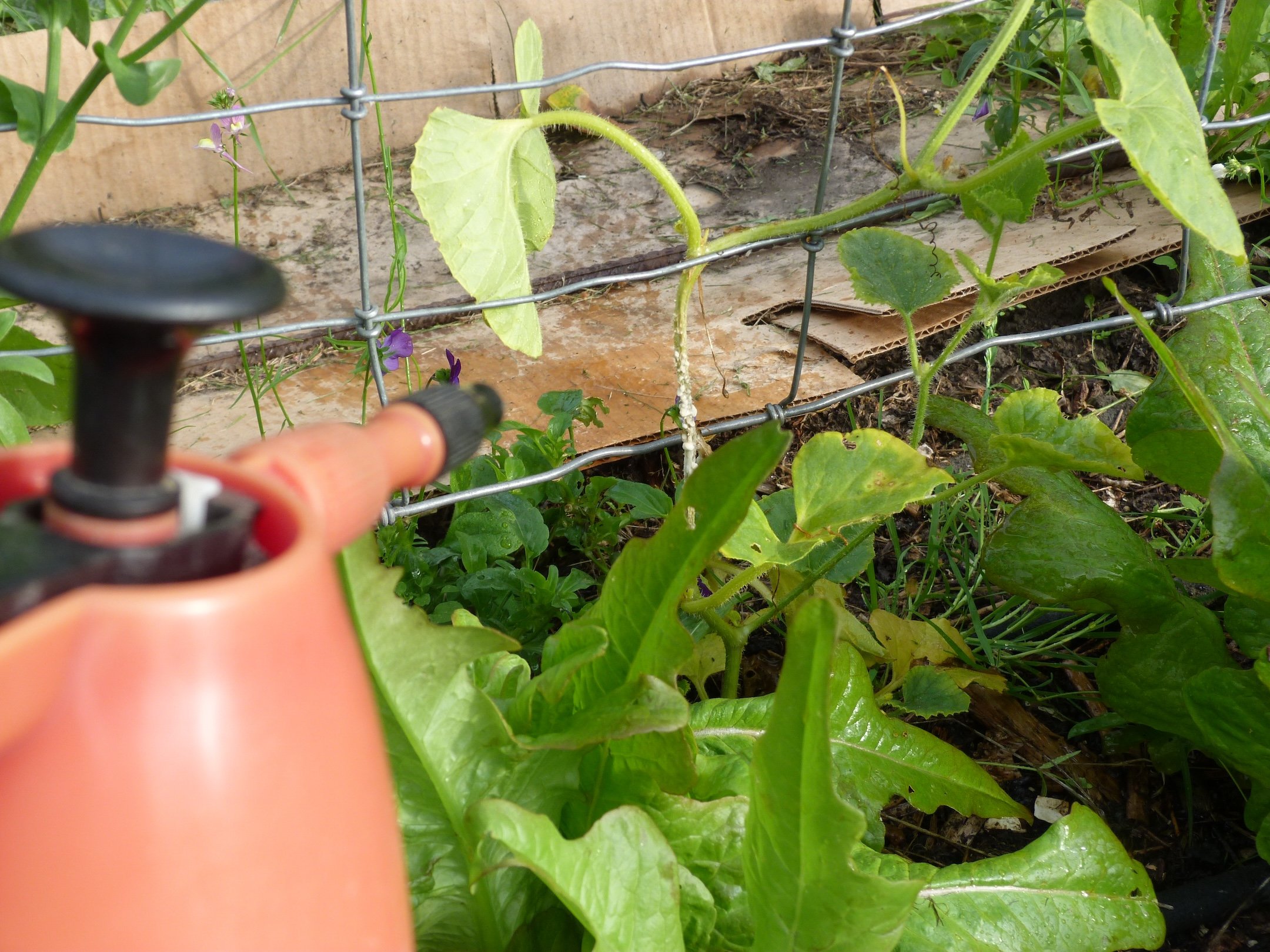Managing Pests Organically
Author Ellen Vande Visse
Managing Pests…Organically!
An Introduction
Synthetic Pesticides
include insecticides, herbicides, fungicides, and rodenticides. Synthetic pesticides and even some natural ones often have harmful effects on humans and pets. Even in amounts as small as parts-per-billion doses, pesticides can disrupt hormones, damage nervous systems, and cause various cancers. Children are more susceptible that adults because their brains are still developing.
When you aim a pesticide at certain weeds or bugs, you also kill off soil food web microorganisms. You may not have intended this, but you drastically reduce the beneficial organisms like mycorrhizal fungi in your soil. Synthetic pesticide toxicity persists for years, decades, lifetimes. Pesticides are widespread. Without breaking down, pesticides wash into water systems and drinking water sources. Wind currents carry pesticides to neighboring forests, gardens, and playgrounds, still carrying their toxic or hazardous effects.
Since pesticides degrade very slowly, they tend to bio-accumulate. Each time a small bug eats a weed with herbicide in it, the bug accumulates the herbicide. Each time a big bug eats those small contaminated bugs, the pesticide passes into the big bug’s tissues. So, the pesticide not only persists; it accumulates in the big bug. The higher a predator is in the food chain, the more concentrated its load of pesticide. Multiple pesticides create a cocktail of interacting chemicals in the organism. Carnivores like salmon, orca, and seals migrate and carry toxic chemicals to remote areas of the entire planet.
Natural Pesticides
Plant-derived pesticides or “botanicals” like rotenone, pyrethrum, and nicotine are examples of “natural” sources. They take only a few days to break down into harmless substances compared to synthetic pesticides. Though not as persistent, these botanicals can be deadly even in tiny amounts. They have potentially health-threatening effects to animals and humans when combined with other hazardous substances prevalent in the environment. I do not recommend you use them mindlessly as “safe substitutes”. Only use botanicals after trying every other less lethal strategy, and then use them with extreme caution.
What is non-toxic pest management?
It means:
That you do not get hysterical about a few bugs or weeds, and vow to spray “just this once.”
You practice prevention (rather than do the extremes of crisis management).
You focus on building a healthy, biologically-rich soil with organic fertilizers and compost to reduce pests.
You promote biological ecosystem diversity (vs. mono-cropping) throughout your whole property to attract natural predators like birds, spiders, and beneficial insects.
You aim to avoid killing off beneficial organisms with any chosen pest treatment strategy.
Remember: Healthy soil grows healthy plants. Sugar content (called Brix ) in plant tissues indicates plant health. Healthy plants do not attract pests , and if a few pests come, a healthy plant will tolerate a bit of pest damage. Most pests are strongly attracted to a crop that is weak, diseased, or nutrient-deficient. This is nature’s way of disposing of genetic garbage. Pests are really police for the plant world. They are programmed to devour the plants that are sick and not prime to breed and multiply. Therefore, don’t kill off the garbage collection crew. Let them be your messengers instead. Stay focused on correcting the soil nutrition, air & moisture circulation, and fostering biodiversity.
Your part is to:
Be conscious of your toleration limit for a pest. Try to be rational vs. emotional.
Stop the root cause of the problem.
Strive for prevention. It is least costly and non-toxic.
Remember that you can reduce but will never eradicate anything.
You will accomplish pest management.
You will never accomplish pest control.
Even with harsh chemical herbicides,
you will never control pests,
because they will mutate,
develop immunity,
and live on.

